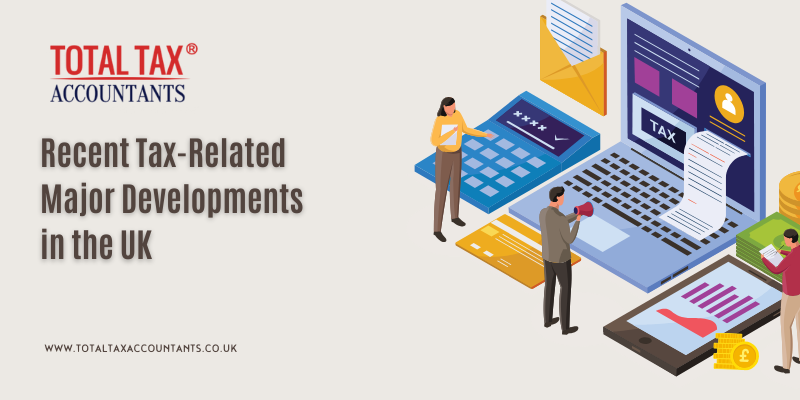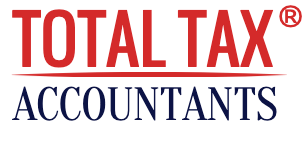In the past few months, the UK government has made several significant tax-related announcements as part of efforts to stimulate economic growth, alleviate the high cost of living, and support businesses and households. Here’s a summary of the key tax changes and proposals:

- Income Tax Adjustments:
- The basic rate of income tax will be reduced to 19% from April 2023, which is a year earlier than initially planned. This reduction is projected to benefit about 31 million people, providing them with an average of £170 more per year.
- Corporation Tax:
- The earlier proposed rise in corporation tax has been cancelled, maintaining the rate at 19%. However, a headline rate of corporation tax increase to 25% for companies with over £250,000 in profits was set to take effect from 1 April 2023.
- Stamp Duty Land Tax (SDLT) Cuts:
- Significant cuts have been made to Stamp Duty, which are expected to assist all levels of the property market, particularly lifting 200,000 homebuyers every year out of paying the tax altogether. The nil rate band has been doubled from £125,000 to £250,000, which means that an additional 200,000 people every year will be able to buy a home without paying any Stamp Duty at all. Additionally, first-time buyers will now pay no stamp duty up to £425,000, an increase from the previous £500,000 cap, and can claim relief on properties valued up to £625,000.
- Additional Rate of Tax Abolition:
- From April 2023, the additional rate of tax of 45% will be abolished, which was followed by the reduction in the basic rate of income tax mentioned earlier.
- Diverted Profits Tax (DPT) and Banking Surcharge Adjustments:
- The rate of diverted profits tax (DPT) will increase from 25% to 31% from 1 April 2023, and the banking surcharge rate will be reduced to 3% from 1 April 2023.
- Tax System Modernization:
- Efforts to simplify and modernize the tax system while tackling the tax gap were part of the tax administration and maintenance day summary, although specific measures were not detailed.
- National Insurance Contributions:
- The 1.25 percentage point rise in National Insurance contributions was reversed, saving nearly 920,000 businesses an average of almost £10,000 the following year.
- Annual Investment Allowance:
- The Annual Investment Allowance was permanently set at £1 million instead of reverting to £200,000 in March 2023, allowing for 100% tax relief to businesses on their plant and machinery investments up to the higher £1 million limit.
The above measures were taken with a larger economic picture in mind, aiming to tackle high energy costs, stimulate business investments, and improve living standards for all.
Expected Effects of Recent Tax Announcements on the General Public
In the wake of several significant tax-related announcements by the British government, there’s a palpable ripple of anticipation coursing through the general public in the UK. These reforms, part of a larger economic strategy, are targeted at alleviating the financial burdens on households, stimulating business investments, and steering the nation towards a trend of robust economic growth. The spotlight is now on how these tax alterations will permeate through different strata of society. This article delves into the expected impacts of these tax adjustments on the general public in the UK.
Income Tax Reductions:
The reduction in the basic rate of income tax from 20% to 19%, taking effect from April 2023, is a noteworthy relief for taxpayers. This reform, encapsulated as a “rabbit in a hat” revelation, is anticipated to buoy the disposable income of around 31 million individuals, affording them an average of £170 more per year. The ripple effects could extend to enhanced consumer spending, which in turn could invigorate the retail sector and other consumer-centric industries. Moreover, the abolition of the additional rate of tax of 45% is another windfall that high-earning individuals will appreciate, possibly leading to higher savings or investments.
Stamp Duty Land Tax (SDLT) Cuts:
The sweeping adjustments in Stamp Duty Land Tax are poised to reinvigorate the housing market significantly. By doubling the nil rate band from £125,000 to £250,000 and extending generous concessions to first-time buyers, the government is lubricating the gears of the property market. These changes are expected to facilitate home ownership, especially for those at the lower and middle rungs of the property ladder, by reducing the upfront costs associated with purchasing a home. Furthermore, the boost in residential investment might spur activity in related sectors such as construction, home improvement, and real estate services, thereby generating employment opportunities and stimulating economic activity.
Corporation Tax Stability:
The decision to cancel the proposed rise in corporation tax and retain it at 19% is a clear beckon for business investments. This gesture of good faith towards the business community could foster a conducive environment for both domestic and foreign investments. It sends a clear signal that the UK is maintaining a business-friendly tax regime, even amidst global economic uncertainties. This could lead to job creation, increased corporate spending, and potentially a more vibrant business landscape.
Diverted Profits Tax and Banking Surcharge Adjustments:
The uptick in the rate of diverted profits tax from 25% to 31% and the reduction in the banking surcharge rate to 3% are tailored to ensure that corporations pay a fair share of taxes and to maintain a level playing field in the financial sector. Although these changes are primarily targeted at corporations and financial institutions, the broader implication could be a more robust tax revenue stream, which could be channeled into public services that benefit the general public.
National Insurance Contributions and Investment Allowance:
Reversing the 1.25 percentage point rise in National Insurance contributions is a sigh of relief for many businesses. This, along with making the Annual Investment Allowance £1 million permanently, is expected to alleviate the tax burden on businesses, encouraging them to invest in infrastructure, technology, and human resources. These adjustments might translate to job creation, better wages, and an overall improved standard of living.
Energy Price Guarantee:
With the UK grappling with soaring energy prices, partly exacerbated by geopolitical tensions, the government’s Energy Price Guarantee and the Energy Bill Relief Scheme are timely interventions. By halving the cost of business energy bills and saving the typical household £1,000 a year on their energy bill, these initiatives are projected to bring down inflation and ease the cost of living.
A Prologue to Better Living Standards:
By intertwining tax reforms with broader economic objectives, the UK government has embarked on a trajectory aimed at improving living standards, tackling inflation, and propelling economic growth. While the full impact of these tax changes will unfold over time, they are a beacon of a possibly brighter financial horizon for the general public in the UK. Through these tax reforms, the government is not only addressing immediate economic challenges but also laying the groundwork for sustainable growth and prosperity.


